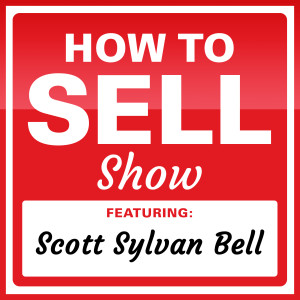Episodes

Wednesday Jan 29, 2020
HTSS40 - How to communicate better with questions and stories - Scott Sylvan Bell
Wednesday Jan 29, 2020
Wednesday Jan 29, 2020
Questions and stories can be used for persuasion
The ability for you to use questions and stories together in sales are the dynamic duo of persuasion. You will find that when you ask questions they make people think. The person does not have to answer the question but with silence they do have to run the answer in their head.
You can leverage asking questions to your advantage when you do it right. You have to be careful since you are not arguing a case in front of a jury. The way that you ask the questions do matter. You have to learn how to use your pitch and tone as well as silence to help you persuade better.
When you are using questions to persuade you will want to pay attention so what you are asking does not become argumentative. The key for you is curiosity above all else. If you are asking questions to help someone through curiosity you can gather information other salespeople cant get.
How to use questions to persuade others
One way for you to work through better questions is to take notes and pause an extra while when writing down the information.
You can use body language to your advantage by tilting your head foreward when asking a question and raising your eye brows.
The fortune is in the follow up
You will want to learn how to ask better questions than your competition. If you are asking the same things the conversation will get boring if you are one of the later salespeople to meet with the buyer.
The fortune is in the follow up is a saying you will hear in sales. The fortune for you is in the follow up questions you ask after asking the original question.
You can use drama moves to find good follow up questions. Look at the high point of the drama to get both regular questions and follow up questions. When people talk to you also look for good questions they ask you and build a file of questions for you to modify latter.
There will need to be a few different types of questions to ask:
Situational questions: – If something happens what will you do? Has there ever been a time where that has not worked out?
Clarification questions: – Help me understand, I am a little confused, when you say that do you mean?
Reversing questions: I am not quite sure what you mean? Could you ask me that another way?
Where questions go wrong
There can be a problem with your question process when the timing is off. This means you are asking questions too quickly.
Your pitch and tone can be wrong and create a defensive position.
One of the worst ways to ask questions is where the answer is already known and it puts too much pressure on the buyer.
You go wrong by leading:
- You have to agree with me, so what is the answer
- What do you think about
- Don’t you agree
Stories can be used to persuade more effectively:
Stories when told well captivate people and can be told again to others.
When stores are told they have to have a point and relate to the buyer. If the story is off topic you will take your presentation off topic.
One of the greatest things about stories is that people can remember stories, especially the ones you want them to. When you think through your sales process you can use stories to evoke emotions.
When telling stories pitch, tone and timing matter. Your buyer or client can be engaged better when you put the right inflections into what is happening.
A story should have a problem that leads to a climax and a resolution that you have to offer that can benefit the buyer.
Problems with stories
If you tell stories with too many facts or too detail rich it creates problems. Stories that are tough to follow will miss the point for the buyer. Persuasion is simplicity and confusion will lead to objections.
Good stories will bypass the critical factor as long as they are not too over the top. If a story is too unbelievable your buyer may get caught up in thinking none of what you say is true.
Stories for objections:
You should have story for every common objection where the client won by using your services. When you take the time to look at your objections and what stories you can use there are great benefits:
- Your overcomeing of the objection is emotional
- Your story does not sound like everyone else
- The answers are more memorable
When possible you should practice stories and also listen to people tell stories. One of the best things you can do after you hear a story is to diagram them out and see if you can retell it better.
A good story will have friction and one way to do this is start from the middle and crate curiosity. This curiosity should be about the tension in the story as well as the resolution.
Learning how to ask good questions and even tell good stories takes time.
Scott Sylvan Bell
@scottsbell
#sales #closer #success #podcast #howtosellsow
This episode was recorded in Sacramento California


No comments yet. Be the first to say something!